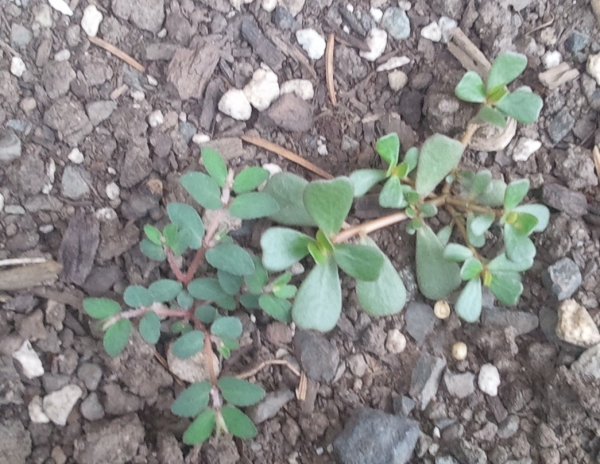It's Euphorbia Maculatamaculata (or a closely related species), commonly known as Prostrate Spurge or Spotted Spurge. More images from Google here.
It forms a tap root, so it's fairly easy to control by hand; my technique is to find all the branches radiating from one central stem, them grasp the stem just below the branching point and pull straight up. I've also found that it responds well to Roundup, if you don't mind using weedkillers. And just yesterday I used a flame weeder on some, which seems to be killingis extremely effective.
Since it can be confused with -Purslane (Portulaca oleracea), here's a picture of the two of them together for comparison, with the Spurge on the left and Purslane on the right.

The leaves on the Purslane are paddle- I'll updateshaped, larger and they are clustered together at the end of the stems. On the Spurge, they're oval in shape and are spaced evenly on the stem. The Spurge's leaves are a darker green than those of the Purslane, and they can have an even darker spot in the middle, hence the common name of Spotted Spurge.
Another way to distinguish is to break the stem: the Spurge will have a few days with more detailsmilky white sap (careful, it can irritate your skin) that will bead at the broken end of the stem, while the Purslane will have a green, almost clear sap.
